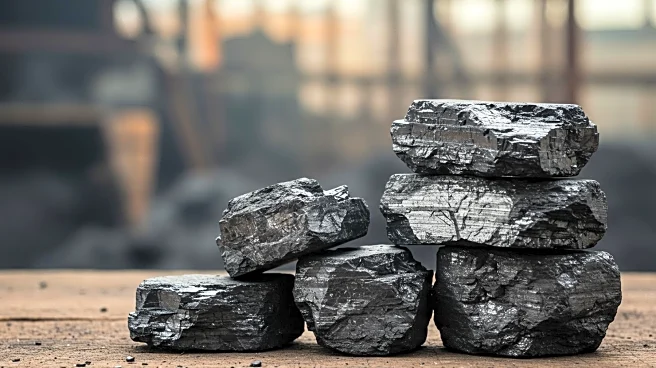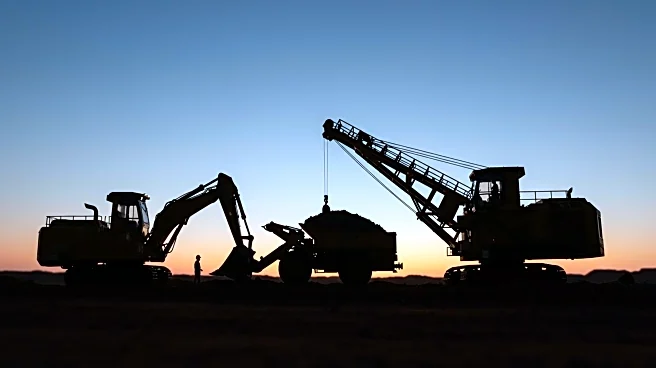What is the story about?
What's Happening?
Australia's New Hope has announced an 18% increase in saleable coal production for the year ending July 31, reaching 10.7 million tonnes. This growth was primarily driven by strong performance at the New Acland mine, despite severe weather and logistical challenges impacting the Bengalla operation in New South Wales. The company's underlying earnings before interest, taxes, depreciation, and amortization were reported at A$765.8 million. However, quarterly earnings saw a decline of 39.9% due to reduced sales from Bengalla. The Bengalla mine faced significant disruptions from flooding and rail cancellations, which reduced coal sales by over 25% in the June quarter. In contrast, New Acland in Queensland saw a 179% increase in saleable coal production, supported by improved rail performance and expanded stockpile capacity.
Why It's Important?
The increase in coal production by New Hope is significant as it highlights the resilience of the mining sector in overcoming environmental and logistical challenges. The strong performance at New Acland demonstrates the potential for operational efficiency and strategic resource management to mitigate adverse conditions. This development is crucial for stakeholders in the coal industry, including investors and regional economies reliant on mining activities. The fluctuations in earnings and sales prices also reflect broader market dynamics, such as the impact of global coal pricing indices and the demand for different coal grades. The ability to maintain production levels despite challenges may influence future investment and operational strategies within the sector.
What's Next?
New Hope may focus on further optimizing operations at its mines to enhance resilience against weather-related disruptions. The company might also explore strategic investments in infrastructure to improve logistics and transportation capabilities, particularly at the Bengalla mine. Stakeholders will likely monitor the company's ability to sustain production levels and manage costs effectively. Additionally, the broader coal market will continue to be influenced by global pricing trends and environmental policies, which could impact future sales and profitability.
Beyond the Headlines
The challenges faced by New Hope at the Bengalla mine underscore the growing importance of climate resilience in the mining industry. As extreme weather events become more frequent, companies may need to invest in adaptive technologies and infrastructure to safeguard operations. This situation also highlights the potential for regulatory and community pressures to influence mining practices, particularly in regions vulnerable to environmental impacts.
AI Generated Content
Do you find this article useful?











